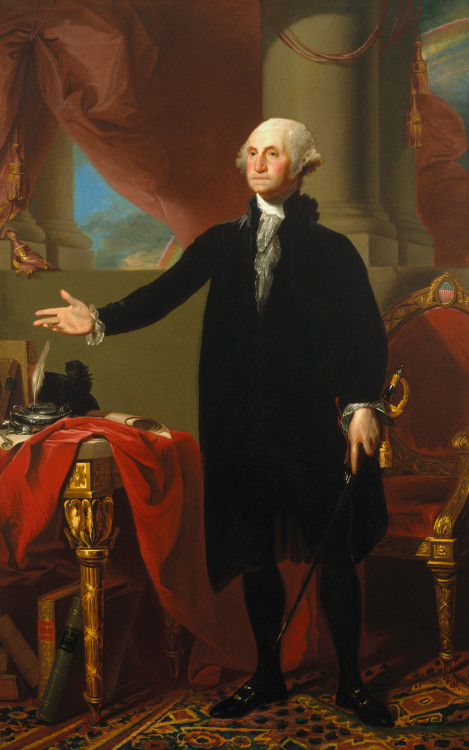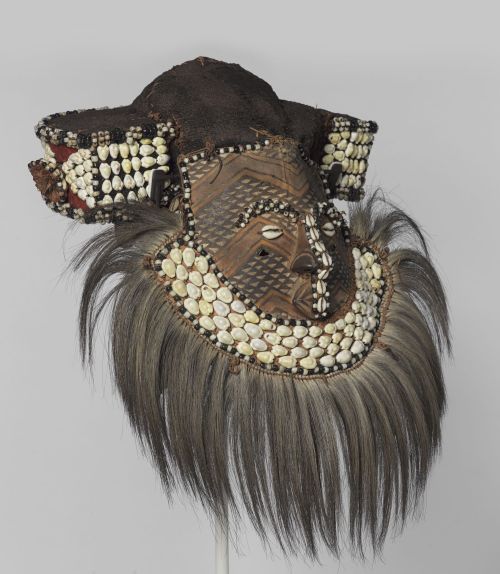How do societies imagine what their founders looked like? How do they pass that image on to future g
How do societies imagine what their founders looked like? How do they pass that image on to future generations? Artist-made images play a crucial role in answering those questions, especially before the mid-nineteenth century invention of photography. Our well-known portrait of George Washington by Gilbert Stuart now shares the stage with another “founding father.” Represented in a mask, Wóót is a legendary figure believed to be instrumental in the founding of the Kuba kingdom in the Congo region of central Africa. Unlike Wóót, there is surviving historical evidence from Washington’s own lifetime, like this portrait, but Washington’s central role in US history has given rise to his own legends. Depicted here is civilian clothes, Washington set the precedent for the president as a man of the people. He is remembered as a moralizing figure characterized by the tale in which he chops down a cherry tree, but admits to his wrongdoing saying, “I cannot tell a lie.” This pairing of an equally iconic Kuba mask with an American portrait demonstrates how two artists represented their founding fathers. See George and Wóót on view together in African Arts—Global Conversations, through November 15.Gilbert Stuart (American, 1755-1828). George Washington, 1796. Oil on canvas. Brooklyn Museum, Dick S. Ramsay Fund and Museum Purchase Fund, 45.179 ⇨ Kuba (Bushoong subgroup) artist. Mask (Mwaash aMbooy), late 19th or early 20th century. Rawhide, paint, plant fibers, textile, cowrie shells, glass, wood, monkey pelt, feathers. Brooklyn Museum, Museum Expedition 1922, Robert B. Woodward Memorial Fund, 22.1582. Creative Commons-BY -- source link
Tumblr Blog : brooklynmuseum.tumblr.com
#bkmafricanarts#presidentsday#george washington#gilbert stuart#founding father#mask#wóót#kuba#congo#central africa#portrait#president#brooklyn museum#history#art#art history#globalconversations

